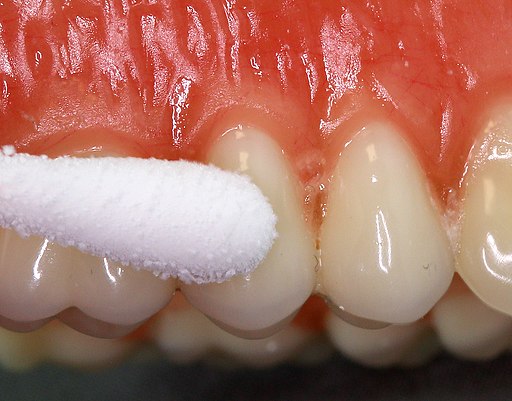This is step 2 of Dr. Glenn Clark’s 5-step process for diagnosing Chronic Trigeminal Neuralgia. Dr. Clark is the Director of the Online Master’s Degree in Orofacial Pain and Oral Medicine at the Herman Ostrow School of Dentistry of USC.
Cold Testing Tooth Vitality
One of the criteria that is commonly used to “consider” irreversible pulpitis is the 10 seconds of lingering pain after cold testing a tooth.
Don’t have time to read the entire article? Download the Endo-Ice Test Checklist for a consolidated breakdown and a brief recap of cold vs. heat vs. electric pulp testing.
Is cold testing pulp vitality logical and accurate?
The 10 seconds of lingering pain is a common method suggesting a nerve is “hyperactive”. By hyperactivity, we mean long-lasting, continued firing of the pain nerves after the cold stimuli is removed.
While there is no high quality research of how long is “too long,” the conventional wisdom in dentistry is if the pain lasts 10 seconds or longer after the cold is removed from a tooth, this is too long. Normally, when a cold test is used, this test is performed on a symptomatic tooth without signs of periapical lucency on a radiograph.
Based on a 2012 systematic review of the diagnosis of the condition of the dental pulp it was determined that the scientific evidence is insufficient to assess the accuracy of the “hypersensibility” to cold stimulation as a method of determining reversible versus irreversible pulp inflammation. Nevertheless, dentists routinely, use this test to justify that a root canal treatment is the next logical treatment for the patient’s symptoms.
Testing Pulp Vitality: Odontotest
The odontotest or Endo-Ice test involves:
- No response = non-vital
- Greater than 10 seconds of lingering pain = substantial pulpitis
Cold spray applied to a Q-tip and then held on a tooth for 5-10 seconds. Assuming pain is produced by this cold stimulation, if the pain lingers for more than 10 seconds after the Q-tip is removed this is considered evidence of irreversible pulpitis.
Don’t forget to download the Endo-Ice Test Checklist!
Is the absence of pain proof of tooth pulpitis?
K. Petersson, C. Soderstrom, M. Kiani-Anaraki M, and G. Levy compared thermal (heat, cold) to electrical pulp test to see if a “dead” pulp could be predicted in their paper, Evaluation of the ability of thermal and electrical tests to register pulp vitality.
Study:
- Reliability of thermal and electrical tests to register pulp vitality.
- Specifically sensitivity, specificity, NPV, PPV were calculated
- Gold standard – direct pulp inspection at root canal.
- Cold (ethyl chloride); heat (hot gutta-percha); EPT [Analytic Technology]
- Positive = 59 teeth in need of endo tx; 29 of which had necrotic pulps.
- Negative = 16 teeth with radiographically normal periapical bone.
- Disease prevalence was 39% with non-vital necrotic pulps.
Cold Testing vs. Heat Testing vs. Electric Pulp Test (EPT) Results
| Cold Testing | Heat Testing | Electric Pulp Test (EPT) | |
| Sensitivity | 0.83 | 0.86 | 0.72 |
| Specificity | 0.93 | 0.41 | 0.93 |
| (PPV) (39%) | 0.89 | 0.48 | 0.88 |
| NPV (39%) | 0.90 | 0.83 | 0.84 |
Overall, the cold and EPT tests were best at finding non-vital (necrotic) pulps. Heat testing was inadequate with many false negatives. Moreover 1 out of 10 teeth tested with cold or EPT will be incorrectly diagnosed.
This article was produced by the Herman Ostrow School of Dentistry of USC’s Online Master’s Degree in Orofacial Pain and Oral Medicine.



